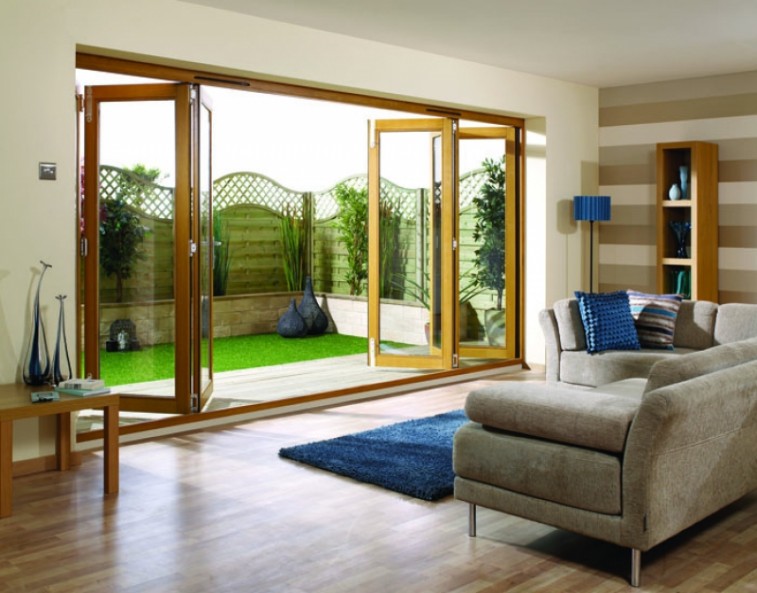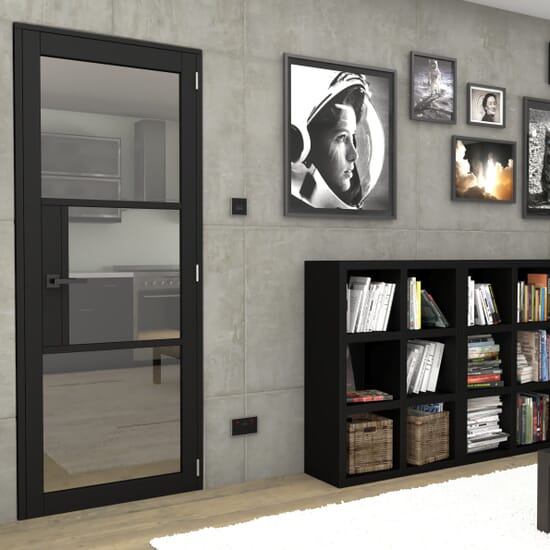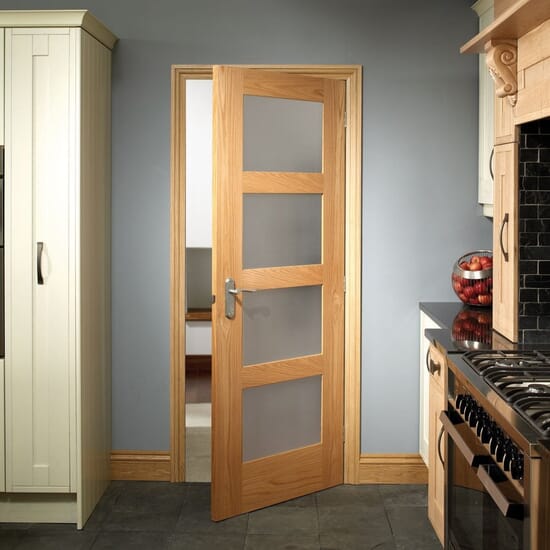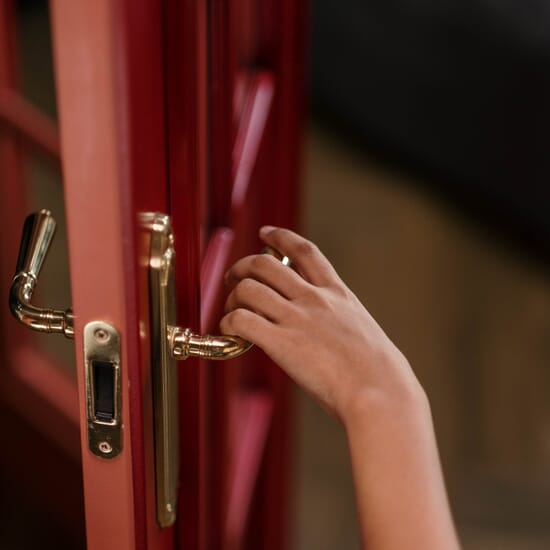How To Measure For External Bifold Doors
Remove The Old Door
Unless you're installing your bifold doors in a brand new home, chances are that you'll first need to remove the current doors. If you're removing older bifold doors, you might be able to leave the tracking in place and use it with your new doors. This would save you a pretty penny, but it should be noted that the tracks can wear over time, especially if they haven't been properly maintained.
So, if you are moving into a new home and wish to replace the existing bifold doors, it might be worth pulling out all the old hardware and starting from scratch. If the existing tracks are in good condition and you wish to re-use them, first check with your supplier that the tracks will be suitable for your new doors before you go ahead with your purchase. If you did previously have bifold doors, you could use the measurements from your old door top help with the purchase of your new doors, assuming they were the correct fit.
If your older doors are not bifold doors, you might need to remove the existing framework in order to make room for the tracking hardware used with bifold doors.
Consider The Tracking
Bifold doors operate on a rolling tracking system that works with a pivot bracket on the floor and a track and guide assembly on the top, which allows for the titular folding movement. The tracks hold and guide your door panels, and are called “tracks,” because they essentially operate in a similar manner to a train track. The track will generally be constructed from durable aluminium, and will need to be assembled separately from the doors themselves.

How To Take Measurements
The first thing you need to consider before pulling out your tape and your notepad, is that you are not just accounting for the bifold doors themselves, but for the tracking hardware that will sit inside the door frame to allow the doors to function as advertised. As a general rule, the aperture should be between a foot and a half to 2 feet higher than the doors themselves.
- First, remember that you should always measure from the face, not the trim and that you should keep your spirit level and notepad (or perhaps smartphone/tablet) on you at all times to take notes.
- Start by measuring the corners of the opening with your spirit level. Everything needs to be consistent and square and if this is not the case then adjustments might need to be made. This can be done by sanding if the opening is wooden and if the aperture is only slightly too shallow in certain areas; if it's too wide then filler and/or packing wedges can fill in those pesky gaps. Always go in small increments though, as if you make a mistake you'll find it easier to rectify.
- There are three main measurements you'll need to make for the height and width at both ends of the opening and in the middle. For the width, measure the side jambs at their widest point and circle the smallest measurement and for the height, measure between the head jamb and the sill at the tallest point and again circle the smallest measurement.
***Remember that you always measure for width before height***
- When measuring, allow for a fitting tolerance of at least 10mm and remember that you'll also need to allow space for the tracking hardware. The size of the door hardware will vary depending on the manufacturer, but a good bet would be to allow for around 45mm. Obviously check with the manufacturer before finalising your order though!
- Make a note of the doors you want to purchase and measure to see how far out they will fold (either in or out). The size of door, and the amount of doors, that you'll be able to fit will obviously depend on the size of the opening, but it will also depend on the space immediately surrounding the opening.
Measure Twice. Buy Once.
The golden rule with measurement, of course, is to always do it twice, as there are always mistakes that can be made the first time. Even the smallest mistake could mean that the doors you purchase will be practically unusable, or at the very least that you could run into some serious problems during the installation process. Make measure twice and order once!
Choose a Style
Size is, in this case at least, very important of course, but so is style. External bifold doors and frames come in a variety of styles and materials, with the most common being UPVC, aluminium and wood (solid, engineered and/or reclaimed). There are also many different styles, although the vast majority will be based around more conventional glass panels.
Still, be aware that not all styles will come in all sizes, so the style you opt for might be restricted by the size of your opening. Conversely, the style you opt for might determine how you measure your opening, because different styles might require different spacing.
All materials and styles have their own intrinsic positives and negatives, but in general, you'll find that wooden frames will allow for taller doors, aluminium frames will let you go wider and UPVC will be more flexible and cheaper (though is less durable and doesn't look quite as special). At all times, make sure you have a decent dialogue open with your supplier and don't be afraid to hassle them with questions if you are unsure.
Considering Your Options
Standard bifold doors generally ship in two or four panel varieties and whilst their sizes will vary from manufacturer to manufacturer, the standard doors will be about 6.8 feet tall, including hardware. When it comes to width, however, things get a little more tricky. The width of the opening will dictate not only how wide your door needs to be, but how many panels you will be able to fit as each door panel will probably measure between 700 and 1000mmm.
This means that an opening of, for example, 2800mm, could accommodate a four panel door or a three panel door. Unfortunately, whilst you probably don't want to end up going the bespoke route, given the costs involved, it might be your only option if your aperture (door opening) is particularly old. Most modern homes, however, have been built to more consistent specifications, so if your home is less than 5 years old, you should be OK to go with more conventional sized doors.
Now that you know how to properly size your external door, check out our full range of external bifold doors. Many of our doors come in a variety of sizes to fit any home.
If you have any questions, get in touch with our friendly customer service team who will be happy to help.







